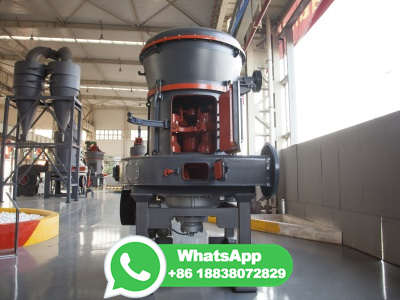
WEBMar 23, 2012 · An alternate route to produce liquid products from syngas is through gas fermentation, a hybrid thermochemical/ biochemical process. Biomass gasifiion, thermochemical syngas conversion routes, and gas fermentation are described including a comparison for converting biomass to ethanol via thecurrent thermochemical route .
WhatsApp: +86 18203695377
WEBThe agent is delivered into the coal seam via one borehole (the injection well) and the coal is ignited in order to start the gasifiion process of converting coal to gas. UCG may also be thought of as a thermochemical mining process, as the gasifiion front results in high temperatures (>1000°C) that cause the hydrocarbons contained in ...
WhatsApp: +86 18203695377
WEBThe alytic conversion of coalderived syngas to C2+ alcohols and oxygenates has attracted great attention due to their potential as chemical intermediates and fuel components. This is particularly true of ethanol, which can serve as a transportation fuel blending agent, as well as a hydrogen carrier. A thermodynamic analysis of carbon ...
WhatsApp: +86 18203695377
WEBNov 29, 2021 · After successful execution of the first CGP I, II III in South Africa, the average production rate of syngas million m3/hour with a major combination of CO, H2 and CH4 inspite of ...
WhatsApp: +86 18203695377
Coal to Liquids and Water Use. Production of liquid transportation fuels from coal biomass requires significant amounts of water, for three major purposes: 1) process cooling demands in coal conversion will often be met by wet evaporative cooling, which is associated with consumption of water through evaporation just as experienced in ...
WhatsApp: +86 18203695377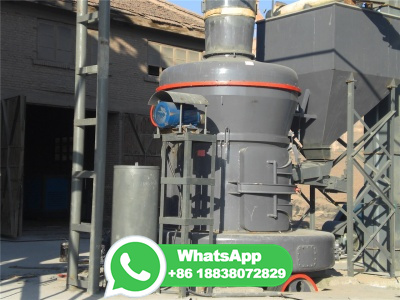
WEBJan 17, 2006 · The plants loed in Secunda and burg (South Africa) gasify >30 million tons per annum of bituminous coal to synthesis gas, which is converted to fuels and chemicals via the Fischer–Tropsch process. The production of chemicals is currently the dominant appliion for synthesis gas, followed by power generation, .
WhatsApp: +86 18203695377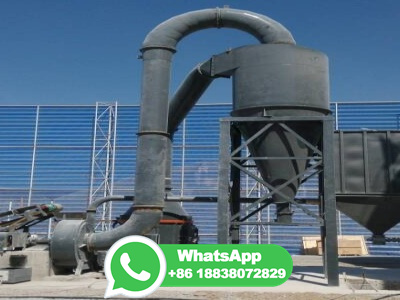
WEBNov 25, 2020 · The BtL process (Fig. 1) has four basic steps: (1) transportation, storage, handling and pretreatment of the biomass; (2) gasifiion to syngas (mixture of CO and H 2) followed by gas cleaning/conditioning; (3) FischerTropsch synthesis (FTS); and (4) upgrading of FTS liquids to high quality main obstacle impeding .
WhatsApp: +86 18203695377
WEBJan 10, 2000 · Although currently uses coal rather than natural gas to produce syngas, the feed to the GTL synthesis step is still syngas. , Mossgas (Pty.) Ltd. (OGJ, Dec. 6, 1999, p. 48), and Shell ...
WhatsApp: +86 18203695377
WEBCoal liquefaction is a process of converting coal into liquid hydrocarbons: ... Using the Fischer–Tropsch process syngas is converted into liquid hydrocarbons. ... 300,000 t/a methanol from MTG process 2009 Synfuels (Pty) Ltd. Secunda, South Africa
WhatsApp: +86 18203695377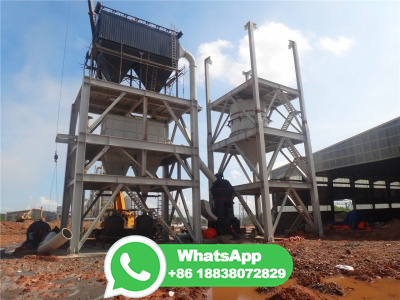
WEBJan 1, 2023 · Hydrogen production from coalderived syngas using a alytic membrane reactor based process. Trace element behaviour in the Lurgi fixedbed drybottom gasifier. Part 3 – The nonvolatile ...
WhatsApp: +86 18203695377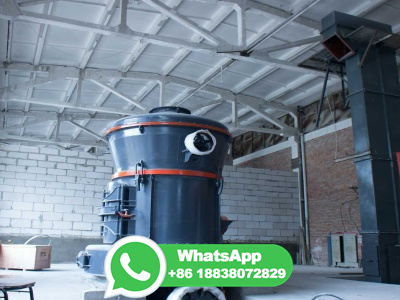
WEBIndirect liquefaction processes require first gasifying the solid feedstocks into a syngas. Therefore, while direct coal liquefaction (DCL) takes coal directly into a liquid phase, indirect coal liquefaction (ICL) consists of two major steps: (a) gasifiion to produce a synthesis gas (syngas); and (b) conversion of the carbon monoxide (CO) and .
WhatsApp: +86 18203695377
WEBJan 1, 2023 · Airblown plants are less amenable to chemicals production appliions and to high levels of precombustion CO 2 capture than oxygenblown gasifiers; 2. a gasifiion plant—for converting solid or liquid hydrocarbon fuels into synthesis gas (syngas); 3. a syngas gas cleanup system; and. 4. a combinedcycle power plant.
WhatsApp: +86 18203695377
WEBIndirect liquefaction is a twostep process. The first step involves gasifiion of coal to produce a mixture of hydrogen and carbon monoxide, called synthesis gas. In the second step, the synthesis gas is heated in the presence of a alyst to make hydrocarbons, with water being the major byproduct.
WhatsApp: +86 18203695377
WEBAbstract. Fischer–Tropsch (FT) synthesis is a heterogeneous alytic process that converts biomassderived syngas (mixture of CO and H2) to synthetic liquid fuels and valuable chemicals. FT synthesis has received renewed interest in recent years due to the necessity to decrease global dependency on fossil fuels.
WhatsApp: +86 18203695377
WEBJan 17, 2006 · , which was established in 1950 with the prime objective to convert low grade coal into petroleum products and chemical feedstocks currently operates three major coal to liquid (CTL) complexes based on the former Lurgi gasifiion process (now known as –Lurgi dry bottom gasifier) in South Africa for the gasifiion of coal into ...
WhatsApp: +86 18203695377
WEBSyngas Market Size Trends. The global syngas market demand was estimated at million Nm 3 /hr in 2023 and is expected to grow at a CAGR of % from 2024 to 2030. Rising demand for cleaner alternatives fuels is expected to drive market growth. Growing government support for clean energy initiatives, including tax credits and renewable .
WhatsApp: +86 18203695377
WEBDec 1, 2021 · 2. Performance evaluation. As mentioned above, the performance evaluation was conducted in both terms: energy conversion and syngas quality. The quality of syngas was measured by the flow rate, H 2 /CO ratio and distribution of major constituents (H 2, CO, and CO 2).The cold gas efficiency (CGE) is the energy ratio of the syngas to .
WhatsApp: +86 18203695377
WEBFigure 1 shows a diagram depicting an estimate of global flows of fossil fuel feedstocks to chemicals production in 2013. Coal figures prominently in the flows to ammonia and methanol, which in turn feed into a wide range of plastics and chemicals; most of the coal use involves gasifiion to syngas on these conversion routes.
WhatsApp: +86 18203695377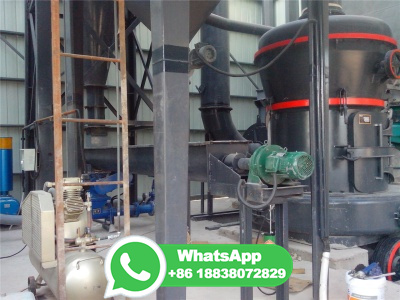
WEBJan 1, 2020 · Fischer–Tropsch (FT) synthesis is a heterogeneous alytic process that converts biomassderived syngas (mixture of CO and H 2) to synthetic liquid fuels and valuable chemicals. FT synthesis has received renewed interest in recent years due to the necessity to decrease global dependency on fossil fuels. FT synthesis is a promising .
WhatsApp: +86 18203695377
WEBMay 24, 2012 · Follower s. South African energy company Limited ( NYSE: SSL) has developed a profitable natural gas to liquid conversion venture which may be a model for turning the huge amounts of ...
WhatsApp: +86 18203695377
WEBStudy with Quizlet and memorize flashcards containing terms like Biomass Potential, What produces the greatest revenue? (transportation fuels, chemicals/plastics/rubber, other), Gasifiion and more.
WhatsApp: +86 18203695377
WEBCoal gasifiion technology is the conversion of a carbonaceous material by reaction with oxygen and steam to produce synthesis gas (syngas) that is a feedstock to produce more valuable and higher quality liquid fuels such as diesel and kerosene. During gasifiion there are hundreds of simultaneous reactions taking place. However, the six .
WhatsApp: +86 18203695377
WEBOct 23, 2023 · This study investigates the potential of using sewage sludge and lowrank coal for the sustainable production of sulfuric acid, which can then be used for the hydrolysis of straw through ASPEN PLUS simulation. Pyrolysis and gasifiion processes were used to convert sewage sludge and lowrank coal into syngas, which were then .
WhatsApp: +86 18203695377
WEBJan 1, 2018 · 1. Introduction. The increasing energy demands worldwide expedite the quest for alternative energy sources, especially clean liquid fuels. Conversion of syngas (CO and H 2) derived from coal, natural gas, waste and biomass to hydrocarbons is a well candidate for production of valuable chemicals and fuels [1], [2], [3], [4].This process is wellknown .
WhatsApp: +86 18203695377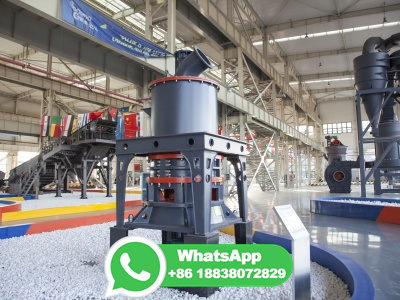
WEBJun 9, 2023 · Coal gasifiion is recognized as the core technology of clean coal utilization that exhibits significant advantages in hydrogenrich syngas production and CO2 emission reduction. This review briefly discusses the recent research progress on various coal gasifiion techniques, including conventional coal gasifiion (fixed bed, fluidized bed, .
WhatsApp: +86 18203695377
WEBFebruary 24, 2022. Petrochemical giant, , will be converting a portion of its coal power plants to gas in a bid to reduce the company's greenhouse gas (GHG) emissions and transition towards cleaner sources of fuel. The company announced on February 21, 2022, that the first phase of the switch will commence at 's Secunda plant ...
WhatsApp: +86 18203695377
WEBApr 22, 2014 · Indirect coal liquefaction (ICL) processes mainly include two important steps. In the first step, the coal is gasified and converted into hydrogen and carbon monoxide, also called as syngas. In the second step, the syngas is further synthesized into liquid fuel. Coal is the most abundant energy reserve in the world.
WhatsApp: +86 18203695377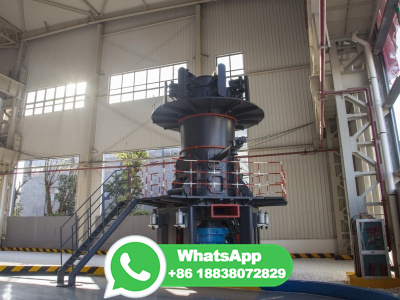
WEBcoal processing. .1950s in South Africa (the process) and now supplies as much as onethird of that country's liquid fuels. Other articles where process is discussed: coal utilization: The FischerTropsch process: .1950s in South Africa (the process) and now supplies as much as onethird of that country's liquid fuels.
WhatsApp: +86 18203695377
WEBJan 17, 2006 · Coal gasifiion is a clean and effective method for converting coal into syngas, which is mainly used in fuel and chemical industry. However, the process of coal gasifiion produces copious amounts of solid waste, that is, coal gasifiion slag, which is very harmful to the surrounding environment, and then to people's lives and health.
WhatsApp: +86 18203695377
WEBDiagram of the Lurgi DryAsh Gasifier (source: ) Operation The Lurgi gasifier is a pressurized, dryash, moving bed gasifier that produces syngas from lump coal, steam, and oxygen as an oxidant. A high ratio of steam to oxygen helps moderate the temperature such that the ash does not melt, but rather is removed as dry ash.
WhatsApp: +86 18203695377
WEBCatalytic conversion of hydrogen (H 2) and carbon monoxide (CO) from coalderived syngas into methanol can be done with conventional gasphase processes, or with a liquid phase methanol (LPMEOH™) process developed by Air Products and Chemicals. The reactions of interest are: 2 H 2 + CO → CH 3 OH. CO 2 + 3 H 2 → CH 3 OH + H 2 O.
WhatsApp: +86 18203695377
WEBJan 1, 2013 · Such systems allow greaterthanequilibrium conversion of syngas to separate streams of CO 2 and H 2 in a single process step. This has the potential to replace the high and lowtemperature watergas shift process, and the solvent extraction and regeneration processes, with a single reactor unit offering a considerable decrease .
WhatsApp: +86 18203695377
WEBJan 17, 2006 · These units can truly be seen as the "work horses" of syngas production from coal at . The demand for synthesis gas at increased steadily over the years, resulting in continuous pressure to increase production rates of individual units. ... The –Lurgi FBDB gasifiion process is a viable process for the conversion of .
WhatsApp: +86 18203695377
WEBAug 1, 2010 · The required water consumption is in the region of 1m 3 (1 ton) per each barrel of fuel production [77] and the coal (bituminous) consumption is between to ton per barrel, according to ...
WhatsApp: +86 18203695377
WEBThe FischerTropsch process is a alytic chemical reaction in which carbon monoxide (CO) and hydrogen (H 2) in the syngas are converted into hydrocarbons of various molecular weights according to the following equation: (2n+1) H 2 + n CO → C n H (2n+2) + n H 2 O. Where n is an integer. Thus, for n=1, the reaction represents the formation of ...
WhatsApp: +86 18203695377